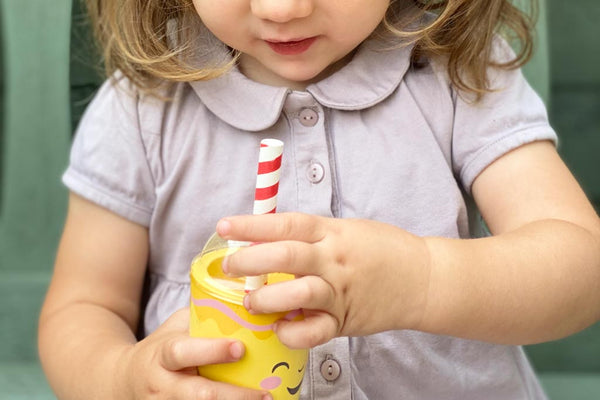Get ready for school with bilateral co-ordination activities

Bilateral coordination is a critical skill that children develop in early childhood. It refers to the ability to use both hands together to perform tasks effectively. Writing, cutting, and using stickers are all examples of activities that require bilateral coordination. As a child learns to write, their non-writing hand holds the paper steady, illustrating the importance of this skill. Developing bilateral coordination sets the foundation for future learning and is essential for school readiness.
Three types of bilateral co-ordination
There are three types of bilateral coordination: symmetrical, asymmetrical, and reciprocal:
- Symmetrical coordination involves using both sides of the body simultaneously and in the same manner, which is crucial for tasks requiring equal force or balance. Examples include star jumps and bouncing a ball with two hands.
- Asymmetrical coordination involves using both sides of the body, but each side performs a different task. This type of coordination is essential for tasks requiring stabilisation on one side while the other side performs an action, such as cutting with scissors or opening a jar.
- Reciprocal coordination involves using both sides of the body in an alternating or sequential manner, which is crucial for tasks requiring rhythmic or continuous movement, such as crawling or riding a tricycle.
What activities support bilateral co-ordination?
There are numerous activities that can help children develop bilateral coordination skills. Painting solid objects, playing with playdough, and building with blocks can all encourage the use of both hands. Threading beads, tearing paper, and peeling stickers also require dexterity and coordination. Other activities include peeling fruit, playing with water or sand, completing puzzles, drumming, engaging in clapping games, sorting objects, using lacing cards, scooping and transferring items, and using clothes pegs.
And don’t forget writing, painting and drawing, which require children to stabilise their work surface with one hand while creating with the other.
Best toys for bilateral co-ordination
Building blocks: Assembling structures using wooden blocks fosters bilateral coordination and problem-solving skills.
Puzzles: Simple jigsaw puzzles and shape-sorting toys help children develop coordination by requiring them to use both hands to manipulate and fit pieces together.
Playdough: Manipulating playdough encourages the use of both hands for rolling, squeezing, and shaping, which helps develop bilateral coordination and strengthens hand muscles.
Musical instruments: Instruments like drums, tambourines, or maracas encourage the use of both hands to create rhythm and sound.
Toy tools: Toy hammers, screwdrivers, and wrenches can help children practice coordinating their hands while they pretend to build or fix things.
Dress-up dolls: Dolls or stuffed animals with buttons, zippers, or laces encourage children to practice their fine motor skills and coordination while dressing the toys.
Conical towers: Stacking toys such as conical towers or nesting cups encourage children to use both hands to balance and stack the pieces, promoting bilateral coordination and spatial awareness.
Shape sorters: Shape sorter toys help children develop hand-eye coordination and problem-solving skills as they use both hands to fit the correct shapes into their corresponding holes.
Wooden railways: Building and playing with wooden train sets or similar track systems require children to use both hands for assembling tracks, connecting train cars, and manoeuvering the trains along the tracks.
Water or sand play toys: Providing tools like shovels, buckets, and moulds for water or sand play can help children develop bilateral coordination as they scoop, pour, and shape materials.
Pretend play: Chop, stir and serve food in your play kitchen for a two-handed workout.
Catch and throw games: Think balls, bean bags and cushions.
Puppet play: Tell a story with two hand puppets - it’s harder than it seems!
Montessori practical life
It is important to provide children with opportunities to practice these skills independently. In the rush of daily life, it can be tempting for parents to help with tasks like fastening buttons or putting on shoes, but this can hinder the development of crucial self-care abilities. Allowing children to figure things out for themselves promotes independence and a smoother transition to school. Children who can take care of themselves on the first day of school can focus on learning and having fun, completing tasks more efficiently, and gaining confidence.
Montessori nurseries understand this and include practical life exercises that help children develop fine motor skills and bilateral coordination. These activities involve everyday tasks such as pouring, transferring, scooping, buttoning, and lacing.
You don’t need nursery-grade Montessori materials. An old cardigan to button or zip and an old pair of shoes to lace.
Final word
Bilateral coordination is one of those secret skills that nursery teachers are so fond of. They aren’t as glamorous as maths and English but they are just as important in the quest to get ready for school.





